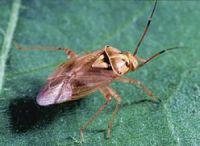 Farmers and growers can now go eco-friendly and economy by using fewer pesticides for controlling cotton pests. The airborne volatile compounds capable of attracting plant-feeding insects to alfalfa can do this favor to both the farmers and the environment.
Farmers and growers can now go eco-friendly and economy by using fewer pesticides for controlling cotton pests. The airborne volatile compounds capable of attracting plant-feeding insects to alfalfa can do this favor to both the farmers and the environment.
The Agricultural Research Service (ARS) entomologists Jackie Blackmer and John Byers, at the agency’s U.S. Arid-Land Agricultural Research Center in Maricopa, Ariz have investigated on how the volatiles — or chemical scents — influence on the ‘western tarnished plant bug’.
This plant bug is a pest that feeds on several important crops, which includes cotton. The entomologists have worked with Cesar Rodriguez-Saona of Rutgers University to make these findings.
Having most of the characteristics of natural chemical scents, the female ‘western tarnished plant bug’ is drawn to alfalfa volatiles and chemically manufactured synthetics. This characteristic can be of great use in developing more effective field traps that are baited with volatiles.
Though volatiles can add flavor to food, fragrance to perfumes and scented cosmetics, plants use them to attract and repel insects! But again, insect responses to volatiles vary.
A green-light-emitting diode (LED), when combined with volatile or synthetic cues, attracts both males and females at all stages of maturity, which can draw positive responses of 80 percent or higher.
Photo by: Jack Kelly Clark, courtesy of University of California Statewide IPM Program




